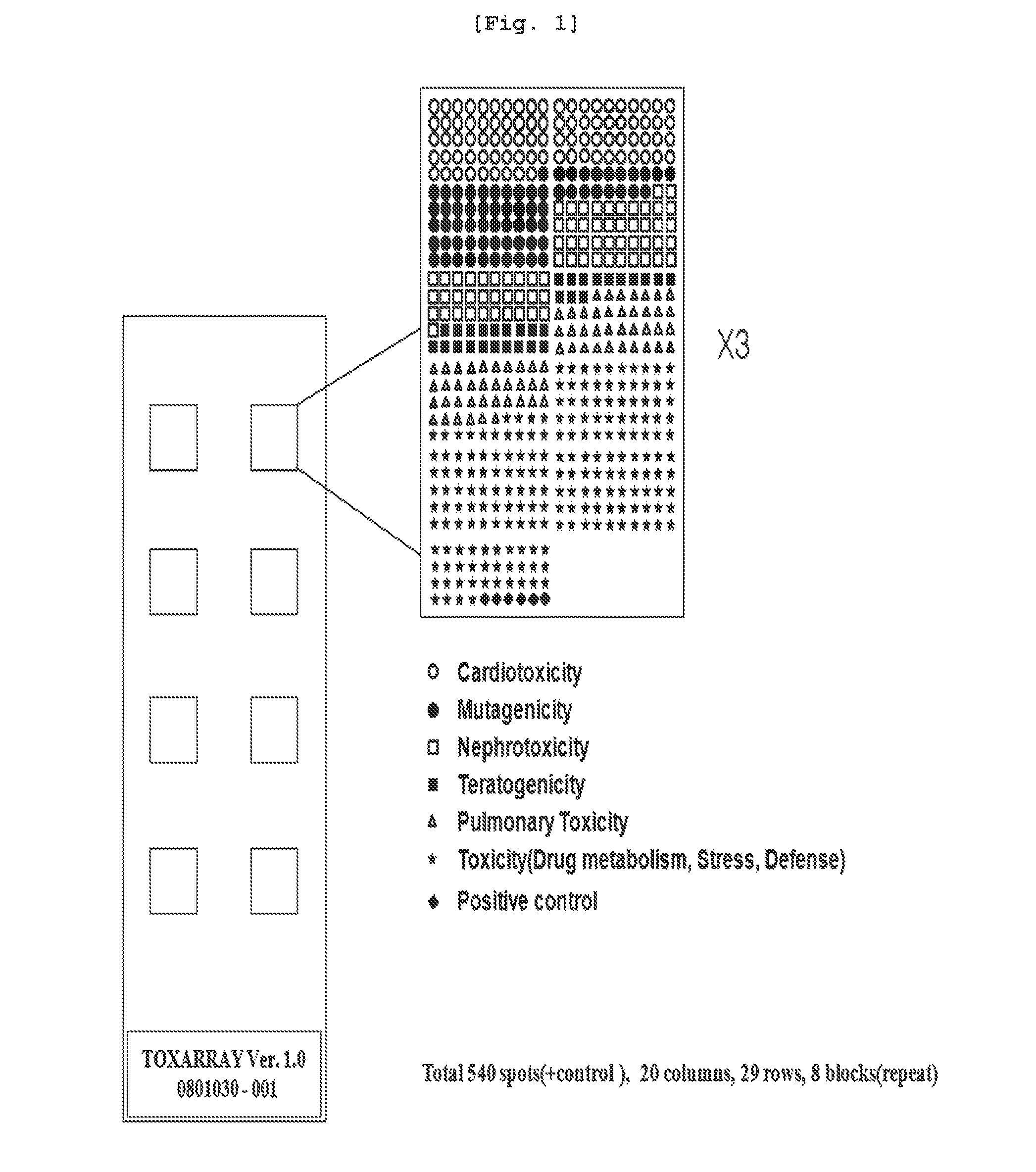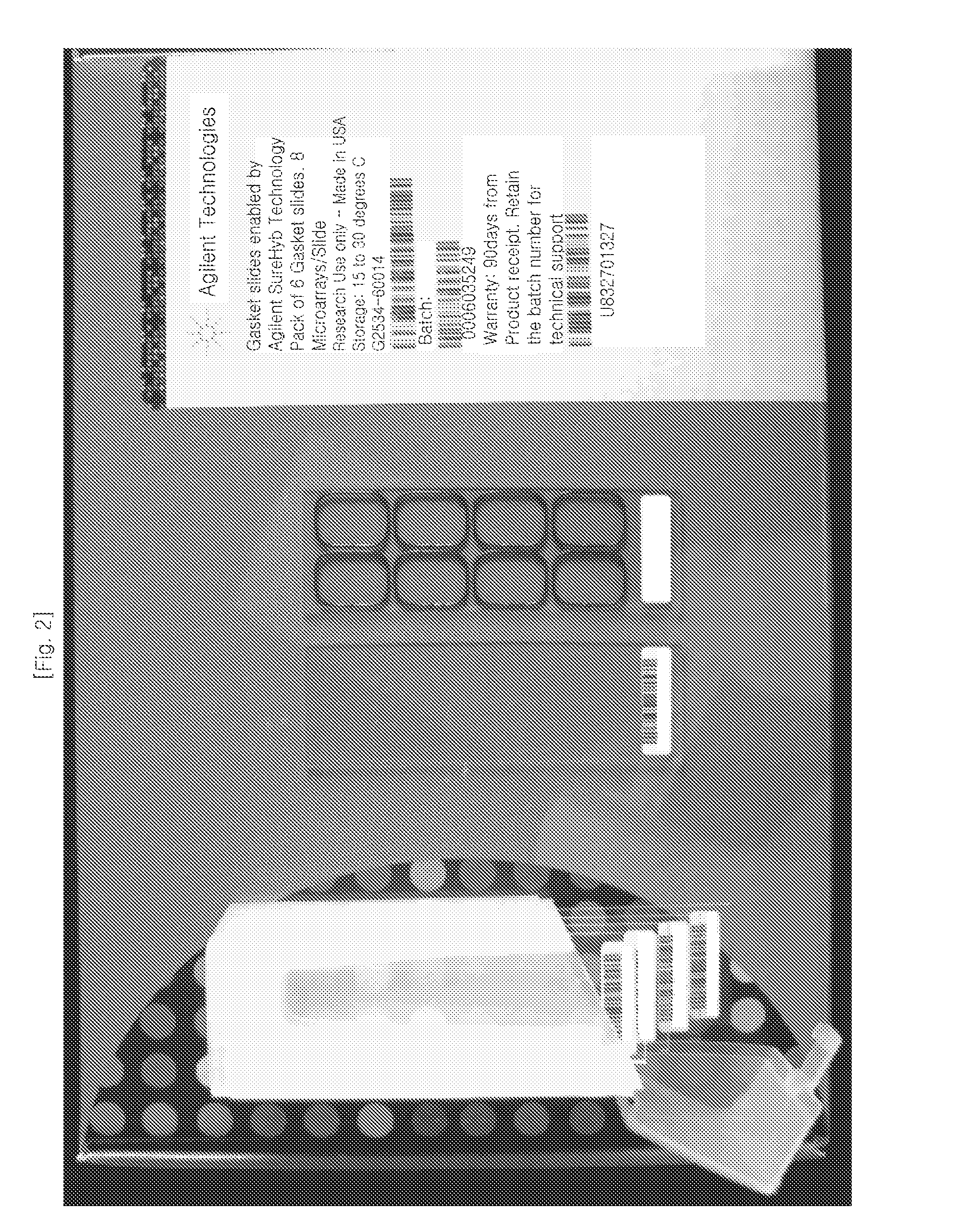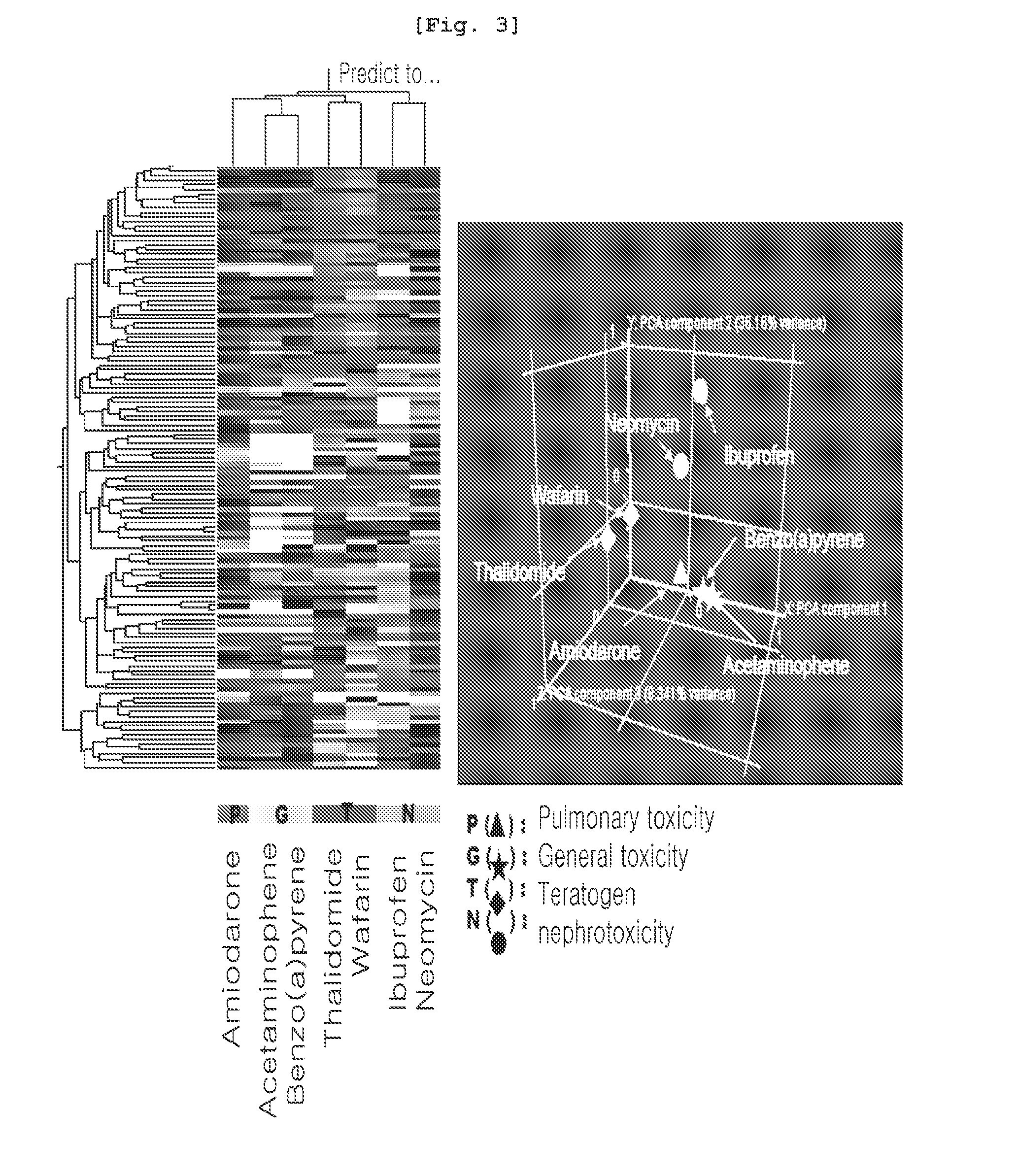Marker genes for screening of drug-induced toxicity in human cells and screening method using the same
- Summary
- Abstract
- Description
- Claims
- Application Information
AI Technical Summary
Benefits of technology
Problems solved by technology
Method used
Image
Examples
example 1
Cell Culture and Treatment of Chemicals
Cell Culture
[0076]Human cell lines, BEAS-2B (ATCC, USA), JEG-3 (Korean Cell Line Bank, Korea) and HK-2 (Korean Cell Line Bank, Korea) were cultured in T 75 flask containing DMEM (Gibco-BRL, USA) supplemented with 10% FBS at the concentration of 5×105 cells / ml. THLE-3 cells were cultured in BEGM (Gibco-BRL, USA) supplemented with 10% FBS. HUVEC cells (ATCC, USA) were cultured in T 75 flask containing EGM-2 (CAMBREX, USA) supplemented with 5% FBS at the concentration of 5×105 cells / ml. The present inventors selected 16 kinds of drugs inducing pulmonary toxicity (Methotrexate, Nitrofurantoin, Amiodarone, Carbamazepine), teratogenicity (Valproic acid, Thalidomide, Methotrexate), nephrotoxicity (Cisplatin, Gentamycin, Amphotericine), mutation [Furylfuramide (AF-2), N-nitroso-N-methylurea (MNU), methylmethanesulfonate (MMS), 4-nitroquinoline-N-oxide (4-NQO), 2-nitrofluorene (2NF)] and cardiotoxicity (Doxorubicin, Daunorubicin), which were considered...
example 2
[0080] Separation of Target RNA and Labeling with Fluorescein
[0081]Cells were distributed in 100 mm dish, to which each drug was treated at the concentration determined in Example for 3, 24 or 48 hours (Table 2). Total RNA was separated from the treated cells by using trizol reagent (Invitrogen Life Technologies, USA) according to the manufacture's instructions, followed by purification using RNeasy mini kit (Qiagen, USA). Genomic DNA was eliminated during RNA purification using RNase-free DNase set (Qiagen, USA). Each total RNA separated above was quantified with a spectrophotometer and purity was confirmed with Agilent 2100 Bioanalyzer (Agilent Technologies, USA).
Preparation of Labeled cDNA
[0082]For oligo microarray analysis, cDNA was synthesized from the total RNA prepared in Example . 30 μg of the total RNA obtained above and 2 μg (1 μg / μl) of oligo (dT) primer were mixed, followed by reaction at 65 for 10 minutes. Annealing was performed in ice right after the react...
example 3
Construction of Toxtarget Array
Oligomer Design and Synthesis of Toxicity / Side-Effect Related Genes
[0088]To construct Toxtarget Array, 512 kinds of oligomers of those toxicity / side-effect related genes selected in were required, so that they were purchased from Agilent Technologies by comparing oligomer set list thereof.
Construction of Toxtarget Array
[0089]For convenience in preparing prototype, microarray construction service of Agilent technologies was used. Probe design with 512 genes in total was requested and probes were prepared in 60 mer uniform type. Array format was as follows; 512 probes were chipped on 1×3 inch glass slide three times repetedly, resulting in 8 plex type, suggesting that this format facilitates 8 tests at a time (FIGS. 1 and 2).
PUM
| Property | Measurement | Unit |
|---|---|---|
| Volume | aaaaa | aaaaa |
| Molar density | aaaaa | aaaaa |
| Molar density | aaaaa | aaaaa |
Abstract
Description
Claims
Application Information
 Login to View More
Login to View More - R&D
- Intellectual Property
- Life Sciences
- Materials
- Tech Scout
- Unparalleled Data Quality
- Higher Quality Content
- 60% Fewer Hallucinations
Browse by: Latest US Patents, China's latest patents, Technical Efficacy Thesaurus, Application Domain, Technology Topic, Popular Technical Reports.
© 2025 PatSnap. All rights reserved.Legal|Privacy policy|Modern Slavery Act Transparency Statement|Sitemap|About US| Contact US: help@patsnap.com



